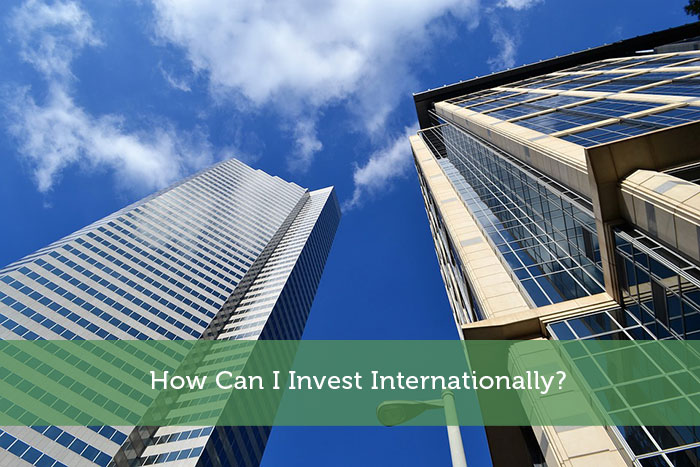There are many excellent public companies with stock market upside outside of North America. How does one go about purchasing a stock on a foreign exchange or otherwise obtain some exposure to foreign companies and what considerations should be taken into account? While there are others, the major worldwide stock exchanges include: NYSE (New York Stock Exchange), NASDAQ, Japan Exchange Group, Shanghai Stock Exchange, Hong Kong Stock Exchange, Euronext (European Union), London Stock Exchange Group, Shenzen Stock Exchange, TMX Group (TSX – Toronto Stock Exchange), National Stock Exchange of India and Deutsche Borse (Germany). Each exchange is covered by its own regulations and processes but opens up a world of interesting businesses.
There are three main ways to gain exposure to a foreign stock:
1. Buying directly from a foreign stock exchange, most likely through an online brokerage
2. Purchasing a foreign mutual fund or ETF that trades on a domestic stock market and
3. Purchasing a foreign stock that trades on a domestic stock exchange through the use of ADR’s (American Depository Receipts).
The latter two options provide exposure but with less risk than buying directly off a foreign exchange. This is largely due to the fact that foreign exchanges may not have the same disclosure requirements to that of North American domestic exchanges. If a foreign company is not required to provide the same level of financial disclosure, you may be left making decisions with less than full information. There is also the risk of currency fluctuation with a direct investment and overall volatility that can be present in some of the smaller, more developing markets and countries. Finally, as is always the case, there may be tax implications with foreign investment. You need to obtain tax advice prior to investing in a foreign market to ensure you are on side with all requirements.
Recommended Stock Investing Posts:
- Roth IRA Conversion Ladder for Early Retirees: Decoded
- Using The Power Of The 80-20 Rule For Larger Returns
- PE Ratio: The Best Market Timing Tool of All?
- Investment Diversification: 5 Risky Mistakes to Avoid
- 2 Easy Ways to Use Arbitrage to Make Money in the Stock Market
- How We Make Money Swing Trading Stocks
- Top 10 Ways to Quickly Improve Your Trading Skills
- 3 Reasons Day Traders Need To Use Volume Weighted Average Price
International Investing Options:
- Buying direct: To buy direct off a foreign stock exchange, find a broker with access to the exchange with which you are interested. Not every brokerage has access but a few do such as Interactive Brokers (access to over 50 markets) and Charles Schwab (access to over 30 markets). For example, Interactive Brokers website has an array of international options in 120 markets, 31 countries and 23 currencies. Contact the broker, set up an account and proceed to buy and sell direct off a foreign stock exchange. Do your homework prior to purchase on financial disclosure requirements of the exchange and any tax implications.
- Purchase a foreign mutual fund or ETF on a domestic stock exchange: This option avoids the difficulty of buying directly off an international stock exchange as the product is purchased domestically. It allows you to purchase a bundle of stocks and avoid the difficulty of doing your own research on foreign companies which may be tedious and difficult. Many of the mutual funds available divide up the stocks involved with various foreign companies and usually, the percentage of domestic companies in the bundle is kept around 20%. Different mutual fund and ETF providers will use different terminology including global, international and foreign to describe their product and each may have a different make-up of foreign and domestic holdings. As an example of the holdings in an international ETF, the Vanguard International Div Apprec ETF has the following top holdings: Nestle SA (Swiss food and drink), Moelis and Company (American investment bank), Tencent Holdings Ltd. (Chinese investment holding company), Osisko Gold Royalties Ltd. (Canadian listed precious metal and royalty interests), SAP ADR (German software) and The Container Store Group Inc. (US storage and organization products). You can also use an app like M1 Finance to buy foreign ETFs such as VXUS and SCHF.
- Purchasing an ADR: An American Depository Receipt (ADR) is an interesting concept that enables the purchase of a foreign stock on a domestic US exchange. The security underlying the ADR is held by a US financial institution with operations overseas and is then traded on an US exchange. The ADR certificate is issued by the US bank. Holders of the ADR are taxed on dividends or capital gains in US currency. Because the US bank requires a sufficient amount of financial disclosure from the listing company, purchasers of ADR’s can be assured of some level of information as compared to buying directly from a foreign exchange (Option 1 above).
Some examples of companies that trade on a US exchange using an ADR include: AstraZeneca (pharmaceuticals), Bayer (pharmaceuticals), Unilever (consumer goods) and Alibaba (e-commerce). As ADR’s are bought and sold like a stock, you can do this through a broker or your own online brokerage account, keeping in mind the foreign exchange operates on different hours and therefore prices can change during overnight periods when your order is waiting.
The prospect of investing internationally is exciting and opens up a world of possibilities to learn and explore new companies and industries.
About the Author: Melissa Tennison is the owner and founder of The Capital Pink. A lawyer by trade, she has combined her limitless curiosity and love of research into a personal finance blog aimed at beginner investors. To connect with Melissa, email her at thecapitalpink@gmail.com or connect on Instagram @thecapitalpink. The Capital Pink is the operating name of ZSM Creative Inc. *** The above constitutes information not advice. See a financial advisor for financial advice.





